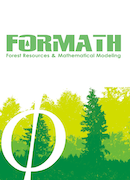Volume 15
Displaying 1-5 of 5 articles from this issue
- |<
- <
- 1
- >
- >|
Original Article
-
2016Volume 15 Pages 1-9
Published: 2016
Released on J-STAGE: April 27, 2016
Advance online publication: April 14, 2015Download PDF (526K) -
2016Volume 15 Pages 10-19
Published: 2016
Released on J-STAGE: April 27, 2016
Advance online publication: March 04, 2016Download PDF (340K) -
2016Volume 15 Pages 20-32
Published: 2016
Released on J-STAGE: April 27, 2016
Advance online publication: April 22, 2016Download PDF (448K) -
2016Volume 15 Pages 33-43
Published: 2016
Released on J-STAGE: April 27, 2016
Advance online publication: April 22, 2016Download PDF (514K) -
2016Volume 15 Pages 44-55
Published: 2016
Released on J-STAGE: April 27, 2016
Advance online publication: April 22, 2016Download PDF (1838K)
- |<
- <
- 1
- >
- >|
